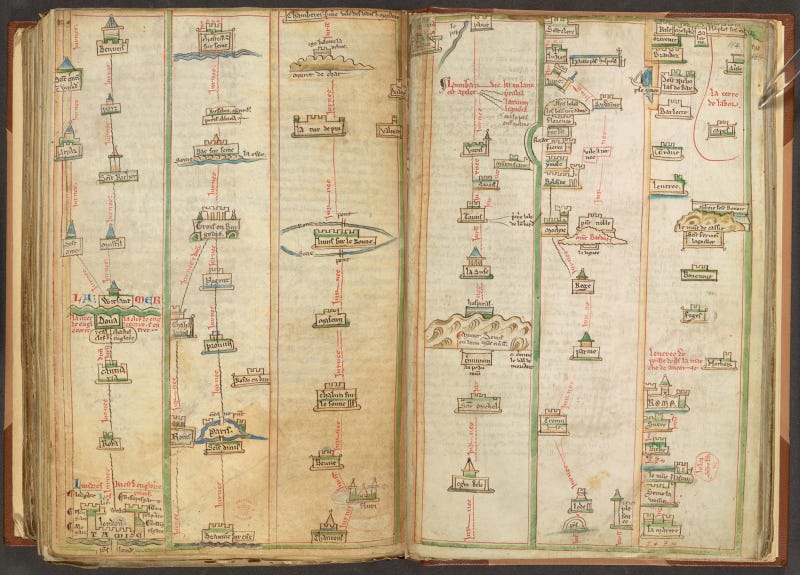Deorbiting the oikoumene

The immersive point of view of itinerary maps like this one by Matthew Paris (made in the 1250s, now British Library, Cotton MS Nero D I) made cartography personally relevant.
Cartography is a cultural miracle. That we should have developed a ‘map consciousness’ was never in the books, never inscribed in the human way of seeing things. And maybe maps a…
Keep reading with a 7-day free trial
Subscribe to Biblonia to keep reading this post and get 7 days of free access to the full post archives.

